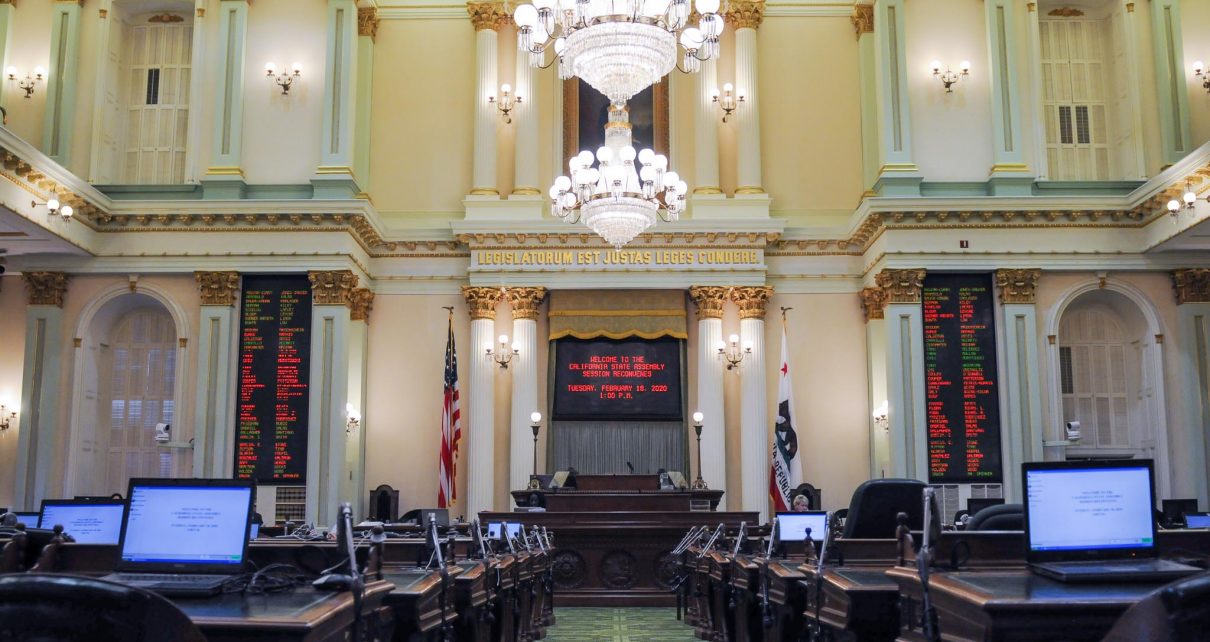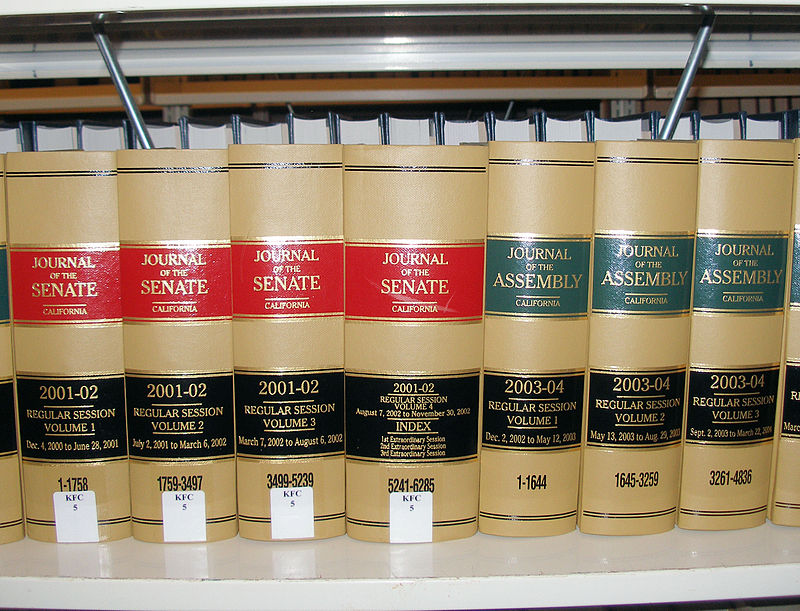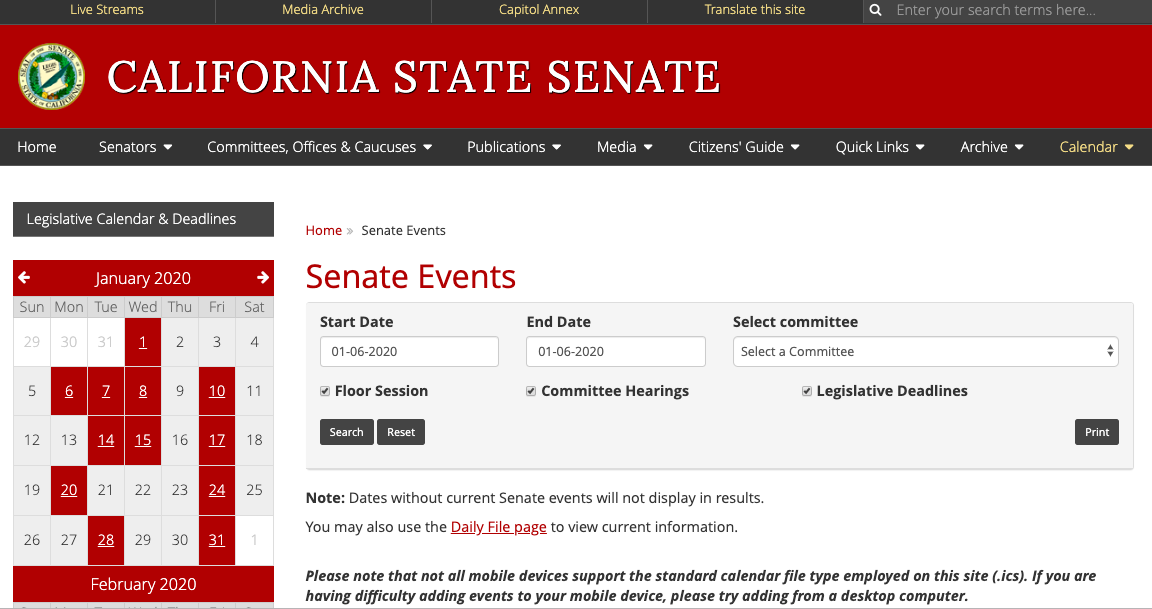
California State Assembly. (Photo: Kevin Sanders for California Globe)
Types of Bill Amendments in the California Legislature
Alteration to a bill, motion, resolution, or clause by adding, changing, substituting, or omitting language
By Chris Micheli, March 23, 2020 6:05 am
In the California Legislature, there are several types of amendments that can be made to measures, including bills, resolutions and constitutional amendments. To begin, an amendment is defined by Legislative Counsel as an alteration to a bill, motion, resolution, or clause by adding, changing, substituting, or omitting language. In order to adopt an amendment to any measure, that amendment must be submitted to Legislative Counsel for drafting. Essentially, there are three ways to make amendments to measures: author’s amendments, committee amendments, and floor amendments.
Author’s Amendments
Upon request of the author of a measure, the chairperson of the committee to which the measure (bill, resolution or constitutional amendment) has been referred may report to the full house (i.e., the Assembly or Senate) with the recommendation that amendments submitted by the author be adopted and the measure be reprinted as amended and re-referred to that committee.
There are several instances where an author may make “author’s amendments” to his or her measure:
- Before a committee hearing – Amendments submitted by the author of the measure to the committee and submitted to the Senate or Assembly Desk by the Chair of the committee to which the measure has been referred are allowed pursuant to individual committee rules. Author’s amendments are permitted without the benefit of a committee hearing and recommendation.
- At a committee hearing or on the Floor – Amendments in committee or on the Floor that are supported by the author can be made to a measure.
Committee Amendments
In addition, there are “committee amendments,” which are amendments proposed by a committee or a committee member in a committee hearing. Such amendments are adopted by roll call vote of the committee. They may or may not be hostile to the author.
Committee amendments to bills are considered upon their second reading, and the amendments may be adopted by a majority vote of the Members present and voting. Assembly and Senate bills amended on second reading by committee amendments are usually ordered reprinted and returned to the second reading file.
Committee amendments must be prepared, or approved as to form, by the Legislative Counsel. A specified number of copies of the committee amendments to measures are delivered to the Assembly Chief Clerk’s or Senate Secretary’s Desk.
Floor Amendments
Any Member may move to amend a measure during its second or third reading, and that motion to amend may be adopted by a majority vote of the Members present and voting. Amendments to a measure offered from the Floor, except committee amendments reported with them, amendments offered with a motion to amend and re-refer a measure to committee, amendments deleting any number of words, or amendments previously printed in the Daily Journal, are not in order unless a copy of the proposed amendments has been placed upon the desks of the Members on the Floor.
A copy of a measure that has been amended only to add coauthors is not required to be placed upon the desks of the Members. Amendments offered from the Floor during a measure’s second or third reading must be prepared, or approved as to form, by the Legislative Counsel. Thereafter, a specified number of copies of the proposed amendments must be delivered to the Assembly Chief Clerk’s or Senate Secretary’s Desk.
Amendments from the Floor during a measure’s second or third reading that would make a substantive change to it must be submitted to the Assembly or Senate Desk by the time of adjournment on the business day before the start of session on the legislative day at which the amendments are to be considered. After the amendments are submitted to the Desk, an analysis is prepared by the committee of origin and a copy of that analysis is distributed to each Member prior to the beginning of debate on adoption of the proposed amendments.
Any measure amended on the second or third reading file is then ordered reprinted and returned to the third reading file, and may not be acted on until the measure, as amended, has been on the Daily File for a specified period (depending on Senate or Assembly rules). This requirement does not apply to a bill that is amended to add or delete an urgency clause or to a bill that is amended to make statutory changes to implement the Budget Bill.
Under the Joint Rules, an amendment must relate to the same subject as the original bill, constitutional amendment, or resolution under consideration by the respective house. An amendment is not in order when all that would be done to the measure is the addition of a coauthor or coauthors, unless the Committee on Rules of the house in which the amendment is offered grants prior approval.
Under Assembly Rule 77.2, the Speaker may re-refer a bill to a committee for two reasons: amendments adopted on the Assembly Floor include policy not previously heard in an Assembly committee, or a bill returned to the Assembly for concurrence in Senate amendments contains policy not previously heard in an Assembly committee.
Under Senate Rule 29.10, floor amendments to Assembly Bills are handled based upon the policy committee’s analysis of the floor amendments. If the floor amendments are marked “re-write” or “new bill,” then special rules apply. If the analysis is marked “re-write,” but the subject matter of the amendments is germane to the previous version of the bill, the measure is sent back to the Committee on Rules for consideration on re-referral.
If the Rules Committee re-refers the bill to a standing committee, the standing committee may (1) hold the bill, (2) return the bill as approved by the committee to the Senate Floor, or (3) re-refer the bill to the fiscal committee pursuant to Joint Rule 10.5. Committees may amend these bills as floor amendments only, and only during the time that amending on the Senate Floor is permitted.
If the analysis is marked “new bill,” then the bill is withdrawn from the Senate Floor and sent to the Rules Committee. The Committee on Rules may either (1) hold the bill or (2) refer the bill to the appropriate standing committee, subject to all Senate Rules and Joint Rules applicable for hearing of bills.
Other Amendments
While amendments to measures can be made in one of the three specified manners previously discussed, Capitol observers hear about two other types of amendments as well. There are “hostile amendments,” which can be made at either a committee hearing or on the Floor. Amendments proposed by another Member in Committee or on the Floor that are not supported by the bill’s author are considered to be “hostile.”
In addition, there are “gut and amend” amendments in which amendments to a measure remove the current contents in their entirety and replace them with different provisions. This last type of amendment does raise the issue of germaneness, which refers to whether a proposed amendment is relevant to the subject matter currently contained in the measure.
However, while Legislative Counsel may opine on the issue of germaneness, the determination of germaneness is decided by the Presiding Officer and, ultimately, subject to an appeal by the membership of the house. As a result, a majority of the Members of the Assembly or Senate determines whether amendments to a measure are germane or not.
- Petitions and Responses in Arbitration - December 29, 2025
- Wage Garnishment in California - December 29, 2025
- Adoption of Unmarried Minors - December 28, 2025




